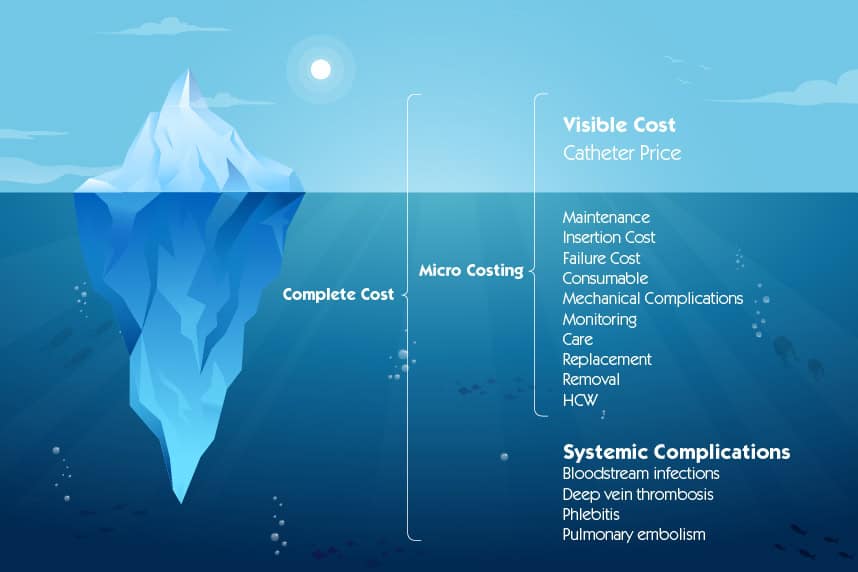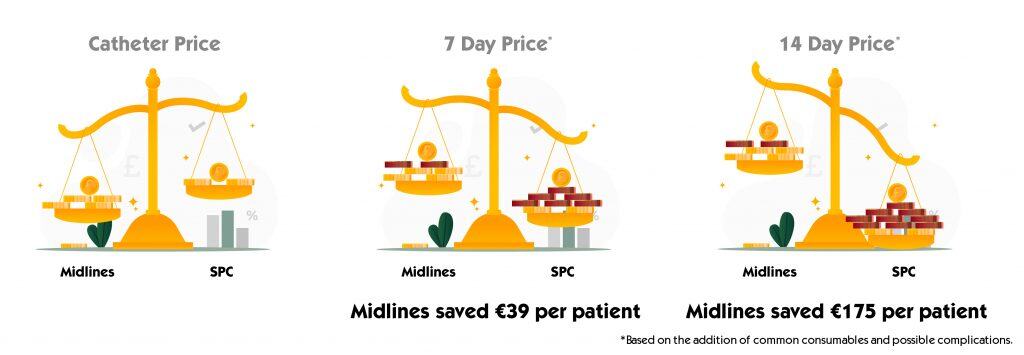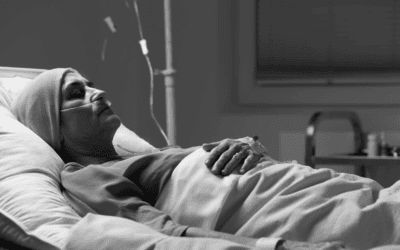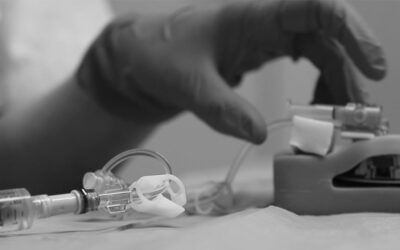Introduction
Venous catheters are essential medical devices for intravenous (IV) therapy, allowing healthcare professionals to administer medications, fluids, and nutrients directly into a patient’s bloodstream. The choice of catheter can significantly impact both clinical outcomes and healthcare costs. Below, we explore the findings from a recent study by Elise Meto et al. (2024), which compares the costs associated with four types of venous catheters: Short Peripheral Catheter (SPC), Long Peripheral Catheter (LPC), Midline, and Peripherally Inserted Central Catheter (PICC).
Types of Venous Catheters
- Short Peripheral Catheter (SPC): These are the most commonly used catheters due to their low initial cost and ease of placement. They are typically less than 6cm and have an average duration of use of 2–4 days.
- Long Peripheral Catheter (LPC): These catheters are longer than SPCs and are used for patients with difficult venous access. They offer a lower risk of systemic complications compared to Midlines.
- Midline Catheter: Midlines are longer peripheral venous catheters inserted in the forearm or upper arm with ultrasound guidance. They can remain in situ for multiple days or weeks, with an average dwell time of 7–16 days, however, can remain in situ for up to 30 days.
- Peripherally Inserted Central Catheter (PICC): PICCs are vascular access devices inserted in veins of the upper extremity that terminate at the cavoatrial junction. They are used for treatments exceeding 14 days.
Study Overview
The study conducted a budget impact analysis to compare the costs of using SPCs, Midlines, LPCs, and PICCs for peripheral IV infusion over 7, 14, and 21 days. The analysis included micro-costing to identify resources used during catheter care procedures and estimated costs of remote systemic complications.

Systemic complications with cost considerations
Different catheters have varying rates of complications, such as bloodstream infections, deep vein thrombosis (DVT), phlebitis, occlusion, and pulmonary embolism. These complications can lead to significant additional costs as they often require additional medical interventions, extended hospital stays, and specialised care.
Choosing the right venous catheter involves several cost implications beyond the initial purchase price. Here are some additional factors to consider:
1. Insertion and Reinsertion Costs
The cost of inserting and reinserting catheters varies. For example, PICCs often require more specialised equipment and personnel, such as fluoroscopy or ECG guidance, which can increase costs. Midlines and LPCs may have lower insertion costs due to simpler procedures.
2. Nursing Supervision and Care
Ongoing nursing supervision and care are required for all types of catheters. The time and resources spent on daily inspections, dressing changes, and managing complications can add up.
3. Removal Costs
The cost of removing catheters also varies. While removal is generally a minor procedure, it still involves nursing time and resources.
4. Dressing Repairs
The cost of consumables (e.g., dressings, antiseptics) and equipment used during catheter care procedures can vary significantly between different types of catheters.
Key Findings from Study
- 7-day Treatment:
- Midlines vs. SPCs: Midlines were found to be more economical than SPCs, saving €39 per patient. Despite higher initial costs, Midlines resulted in fewer systemic complications, leading to overall cost savings.
- 14-day Treatment:
- Midlines vs. SPCs: Midlines provided savings of €175 per patient compared to SPCs.
- Midlines vs. PICCs: Midlines were also more economical than PICCs, saving €102 per patient. The lower complication rates associated with Midlines contributed to these savings*.
- 21-day Treatment:
- Midlines vs. PICCs: Midlines were more economical than PICCs, saving €95 per patient*.
- LPCs:
- LPCs vs. SPCs: LPCs were more economical than SPCs for 7 and 14 day treatments.
- LPCs vs. PICCs: LPCs were more economical than PICCs for 14 and 2 day treatments.

Discussion
The study emphasises the importance of considering both direct and indirect costs when choosing a venous catheter. While SPCs have lower initial costs, their higher complication rates and shorter dwell times can lead to increased overall costs. Midlines and LPCs, despite their higher acquisition costs, offer significant savings due to their longer dwell times and lower complication rates.
Healthcare professionals should consider the economic impact of catheter choice in addition to clinical factors. Midlines and LPCs can be more cost-effective options for peripheral infusion over various durations, potentially leading to better patient outcomes and reduced healthcare costs.
Conclusion
The findings from this study provide valuable insights into the cost-effectiveness of different venous catheters. Midlines and LPCs emerge as more economical choices compared to SPCs and PICCs for peripheral infusion over durations of 7, 14, and 21 days. This economic evaluation can aid healthcare professionals in making informed decision that balances both clinical efficacy and economic efficiency. By understanding the full scope of costs associated with different catheters, healthcare providers can improve patient outcomes and optimise resource utilisation.
Limitations
The study was conducted in a single centre, and results may vary in different hospitals or countries. The use of fluoroscopy for PICC placement, which involves higher costs, was a limitation*.
References:
Meto E, Cabout E, Rosay H, et al. Cost comparison of four venous catheters: Short peripheral catheter, Long peripheral line, Midline, and PICC for peripheral infusion. The Journal of Vascular Access. 2024;0(0). doi:10.1177/11297298241258257


